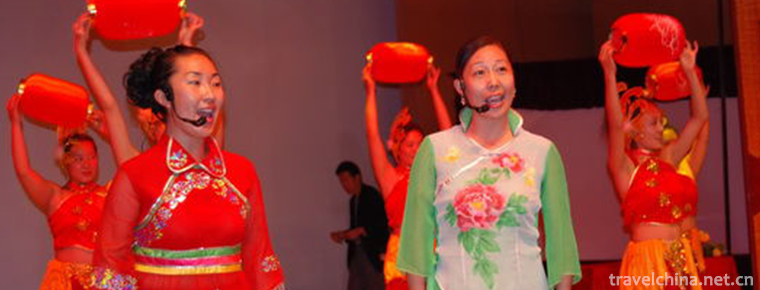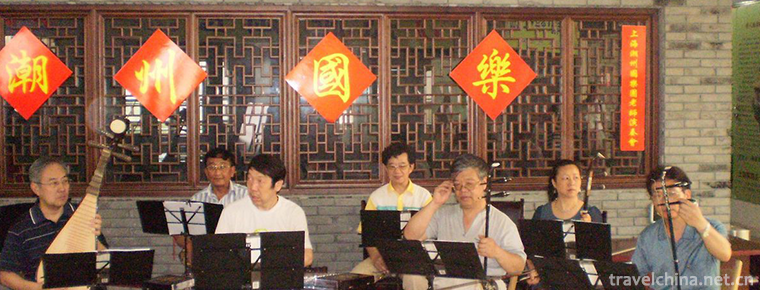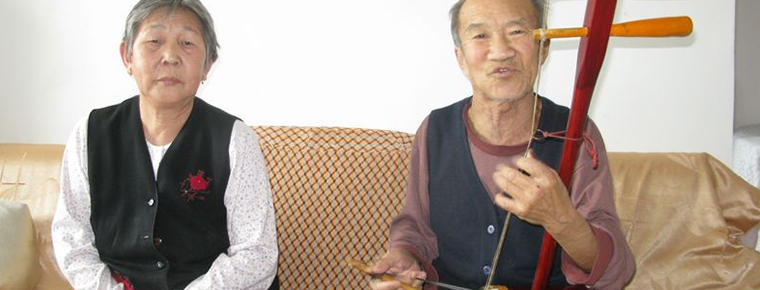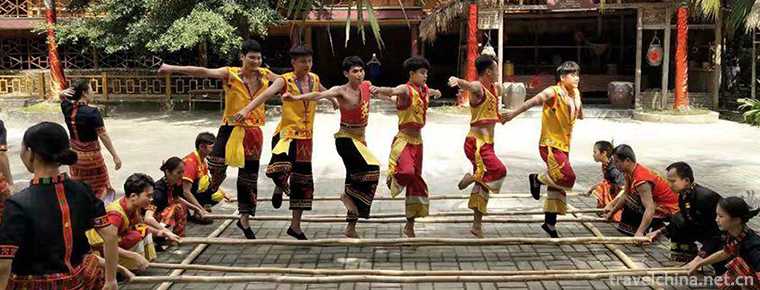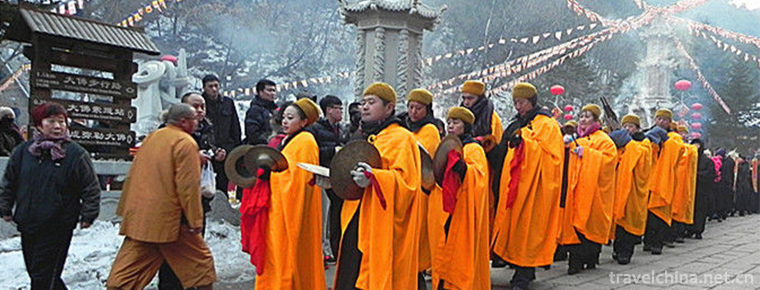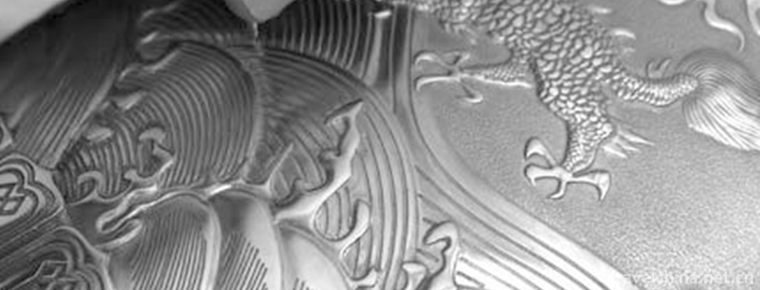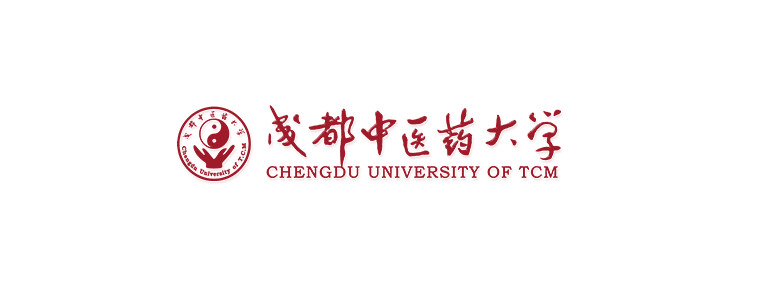Danzhou tune
Danzhou tune
Danzhou tune is a traditional folk song which only spreads in Danzhou of Hainan Province and has a unique regional style. It is sung in Danzhou dialect with a lively rhythm, beautiful melody, warm feelings and can sing and dance. It is praised as "a wonderful flower in Nanguo Art Garden". Danzhou tune is characterized by the collective singing of men and women. It integrates singing and dancing. It is an excellent heritage of Chinese folk culture.
On May 20, 2006, Danzhou tone was listed in the first batch of national intangible cultural heritage list with the approval of the State Council.
historical origin
Danzhou tone came into being in the Western Han Dynasty. It originated in Yangpu Special Zone, Sandu, Eman, Mutang, Lanxun, Pinglin and Guangcun along the northern coast of Danzhou. It is a kind of traditional folk song sung in Danzhou dialect, similar to folk minor.
The content of tone is mainly about expressing love and happy life. The characteristics of beautiful melody and group entertainment are spread in Danzhou, Sanya, Changjiang, Baisha, Oriental and other places. As a result, Danzhou was named "Town of Chinese Folk Art" by the Ministry of Culture.
There are no fixed occasions and time for singing tunes, which can be carried out in hillside fields and town fairs during the leisure season and the holidays. The main reason is that young men and women express their feelings by singing each other. The tunes are especially popular on August 15th of the lunar calendar.
"Danzhou has been known as the Sea of Songs since ancient times, and the folk songs have made all flowers blossom; everyone is a mountain singer, and the mountains and rivers are singing stations. "Danzhou, located in the northwest of Hainan Island, has a long history. Since the establishment of Emperor Wudi of Han Dynasty in the first year of Yuan Dynasty, it has a history of more than 2000 years. Especially in the Northern Song Dynasty, Su Dongpo, a literary emperor, lived here and promoted culture and religion, making Danzhou known as "the sea of poetry and songs" since ancient times.
Danzhou tune evolved from Danzhou folk songs. It originated in the Western Han Dynasty and originated in Yangpu Special Zone, Sandu, Eman, Mutang, Lanxun, Songlin and Guangcun in the north of Danzhou.
Most of the songs sung in the tune Festival are love songs at first. Young men and women communicate with each other collectively on the moonlit night or in the bright spring. By the end of the Qing Dynasty and the beginning of the Republic of China, the tone had absorbed the elements of "school folk songs"; by the May 4th period of the last century, many revolutionary themes appeared in the tone; during the War of Resistance Against Japan and the War of Liberation, it became a powerful weapon to expose and attack the enemy. After the founding of New China, the Song Competition on the water conservancy construction site in the 1960s set off the third climax of the development of Danzhou tone.
Danzhou Tuning Team has performed in Wuhan, Guangzhou, Beijing and other places, setting off a "Danzhou wind" everywhere. The Danzhou tune melody is quoted in the movies "Coconut Forest Music" and ballet "Red Detachment of Women". Tone also participated in the Spring Festival Gala in the six provinces of Central and South China, and won the national gold and silver prizes. In 2001, the tuning exhibited in Nanning International Folk Song Festival. CCTV and Zhejiang Satellite TV also went to Danzhou to collect the tuning style, and made the tuning into a special program to broadcast on many provincial satellite TV. In 2001, the first Danzhou Tuning Festival was held in Hainan. There emerged 278 tuning teams in urban and rural areas of Danzhou. Nearly 10,000 people participated in tuning performances and sports competitions.
Representative works
Over the years, more than 600 tunes have been collected, and some representative tunes include "Heaven and Earth Collapse", "Variety of Motherland's Rivers and Mountains", "One moment does not see three times dull", "One hammer beats drums silently" and so on.
artistic characteristics
Danzhou tune breaks through the inherent manifestation of folk songs. It is a popular form of activity for the masses, whether it is lyrics, tunes, rhythms, melodies or modes.
Danzhou tone is mainly used by young men and women to express their feelings, talk about love and spontaneously carry out matches in town fairs or hillside fields during the holidays or leisure time. Especially the Mid-Autumn Festival is very busy every year, with thousands of participants. Danzhou tunes are beautiful, enthusiastic, lively and full of dancing styles. Male singers and female singers answer one after another. They have distinct local characteristics and unique artistic style.
Danzhou tone is similar to folk minor. There are many modes of tune, such as Gong, Shang, Yu, and so on. In the course of melody, there are also frequent changes of mode exchange and transposition. Moreover, Danzhou tone is good at absorbing the melodies of ancient, modern and foreign songs in its development, which is one of the important reasons why the tone art is constantly singing, keeping pace with the times and lasting. The lyrics of the ancient Danzhou folk songs are mostly "two and a half sentences" with loose rhyme. Later, people learned the melody of "Cheshui Song" in their work, and joined in the dance rhythm with distinct rhythm and high emotional tone to sing collectively. When singing, arms and body swing back and forth with the rhythm of the song.
Tone has a number of common tunes, based on which to develop and change, can create more new songs, thus singing often new.
Song contest
Danzhou young men and women's songs mainly focus on tuning. When singing, the men's and women's teams stand in two rows opposite each other, about 3 meters apart. Before the song, each line member hooks each other's tail fingers, starts from the song head, leads, conducts and chooses the lyrics. The men's team sings first and the women's team answers. After the first part of the lyrics is sung, one or two tunes are sung instead of instruments, then the second part is sung. Formation changes at any time, sometimes semi-circle, sometimes word swing, singer hand in hand, two feet swing rhythmically around. There is no time limit for the song, so as to "sing down" (the other party can not answer). In song matches, teams have uniform clothes, even straw hats, glasses, shoes, watches are the same. During the festival, more than a dozen teams and dozens of male and female singers in the singing arena compete with each other and watch the crowds of people, very lively.
The Rhythm of Tone
Danzhou tone is divided into two kinds: long tone and short tone. It is popular in Danzhou dialect area.
Danzhou tuning, commonly known as "A voice" and "Yisheng" (also known as "Yisheng"), is derived from the evolution of Danzhou folk songs. It is mostly "one word duet", with a soft, graceful and colloquial tone, concise and understandable wording, and lively.
Inheritance significance
Danzhou tune has a long history. It reflects the development of ancient music in Hainan. It is of great significance and historical value to the study of ancient music development in Hainan. It has been highly appraised by international music experts such as the United States, Canada and domestic music circles.
Danzhou tone is the spiritual wealth created by the working people. It plays a unique role in different historical periods and is one of the important brands of Hainan culture. Tuning Song Festival is a good form of self-entertainment and self-education for the masses. The Danzhou Municipal Government has decided to designate August 15 as "Mid-Autumn Tuning Festival" to protect tuning in an all-round way.
Crisis and Rescue
With the popularization of TV, song and dance hall, Internet cafe and social economy, Danzhou tone has been greatly impacted. After the 1980s, fewer and fewer young men and women learned to sing tunes, and with the old artists leaving, the cultural heritage inherited by dictation and behavior is disappearing, and the tune is facing the danger of fault and loss of transmission.
In order to rescue Danzhou tuning, successive leaders and cultural departments of Danzhou City have taken various protective measures, such as Danzhou Cultural Museum organized more than 1000 tuning songs and compiled songs. In addition, Danzhou has taken a variety of protective measures: setting up Danzhou intangible cultural heritage protection engineering center and city tune-up folk song association to actively carry out folk tone activities and rescue and protection; encouraging and supporting amateur tone teams to carry out tone activities; encouraging and supporting individual households or enthusiasts to record and publish tone CD, VCD, and disseminate tone; organizing tone training courses, mentioning tone. Talent quality of high-key voice art.
The state attaches great importance to the protection of intangible cultural heritage. On May 20, 2006, Danzhou Tune was approved by the State Council and listed in the first batch of national intangible cultural heritage list.
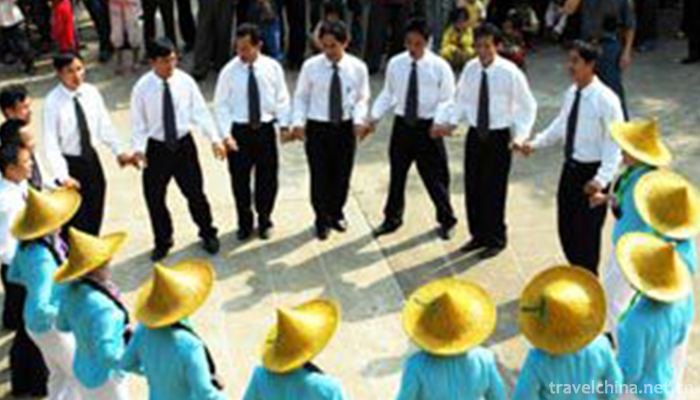

Danzhou tune
-
Tibetan Paper making Techniques
Tibetan paper-making technology, Tibetan Autonomous Region's traditional handicraft, one of the national intangible cultural heritage. Tibetan paper-making skills are usually made by peeling
Views: 470 Time 2019-04-15 -
Changli folk songs
Changli folk song is a kind of local folk ditty inherited from generation to generation by Changli people. The content of singing can be divided into four categories: labor chant, story and legend, lo
Views: 237 Time 2019-04-15 -
Chaozhou Music
Chaozhou music is the general name of all kinds of traditional folk instrumental music spread in Chaoshan area of Guangdong Province, referred to as Chaozhou music
Views: 187 Time 2019-04-16 -
Daur Uqin
Daur Uqin, also known as "Wuchun", is a form of Daur folk art storytelling. It forms and prevails in Meilis Daur, Fulaerji, Fuyu and Longjiang counties of Qiqihar City, Heilongjiang Province
Views: 196 Time 2019-04-22 -
Li nationality firewood dance
The firewood dance is one of the representative folk dances of the Li nationality. It is called "Turn Brake" and "Taisha" in the Li dialect. It originated from the funeral custom o
Views: 247 Time 2019-05-12 -
Qianshan Temple Music
Qianshan, located 20 kilometers southeast of Anshan City, Liaoning Province, is one of the most famous scenic spots in the country. In the northeast, Qianshan is as famous as Changbai Mountain in Jili
Views: 169 Time 2019-06-10 -
Tin carving
Tin sculpture, the traditional Chinese sculpture art, is a unique craft in China and even in the world. It has a history of more than 300 years. The craft has a long history and has a long history. In
Views: 353 Time 2019-07-01 -
Cognitive Method of Life and Disease in Traditional Chinese Medicine
Cognitive method of life and disease of traditional Chinese medicine, one of traditional Chinese medicine, is declared by the Chinese Academy of Traditional Chinese Medicine and one of the national in
Views: 186 Time 2019-08-03 -
Chengdu University of TCM
Chengdu University of Traditional Chinese Medicine, formerly known as Chengdu College of Traditional Chinese Medicine, was founded in 1956. It was one of the earliest four Chinese medical colleges and
Views: 237 Time 2019-08-31 -
Social security in Luzhou
By the end of 2017, the total number of participants in basic endowment insurance in Luzhou city was 2662800, an increase of 130700 compared with the end of the previous year. At the end of the year, 1031700 people participated in the basic endowment insurance for urban employees
Views: 352 Time 2020-12-14 -
Population of Mianyang
By the end of 2018, the total number of households in Mianyang was 2 million 61 thousand and 800, and the registered residence population was 5 million 362 thousand. At the end of the year, there were 4.857 million permanent residents, with the urbanization
Views: 127 Time 2020-12-14 -
Neijiang ten sages
Ten sages are outstanding representatives of historical figures in Neijiang, which are described as "one division, two phases, three number one scholars and four great masters";
Views: 357 Time 2020-12-16

